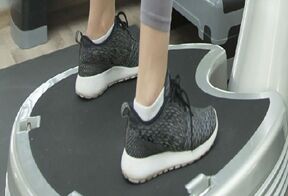震荡减肥仪并不能帮你减肥
|
It's the star of a thousand late-night infomercials: vibration platforms that promise all the hard-won benefits of exercise while you simply stand there and jiggle. While previous research has looked into how whole body vibration (WBV) functions as an 'exercise mimetic', there's still a lot we don't understand about how vibration alone can produce such significant changes in the body.
Now, a recent study in mice illustrates a new way that WBV could bring about health benefits in the metabolism: by modifying the makeup of the microbiome, the immense population of microbial organisms that reside in and on your body. "While the biochemical and physiological improvements from WBV as an exercise mimetic are indisputable, how WBV achieves such effects is likely multi-faceted and largely unknown," a research team led by paediatric plastic surgeon Jack Yu from Augusta University explains in a new paper. To investigate WBV's effects on metabolism, Yu and his team studied a mouse model of type 2 diabetes: mice engineered with a leptin deficiency mutation, lacking a protein that protects against obesity, insulin resistance, and type 2 diabetes. These animals – along with healthy controls – were subjected to WBV for 20 minutes a day for a period of four weeks. After the experiments, researchers analysed samples of the mice's abdominal adipose tissues, and also stool samples. What they found was that WBV appeared to alter the distribution and makeup of macrophage immune cells in the mice. The results might offer a promising new lead into research looking at fighting inflammation in human patients with type 2 diabetes, although the researchers emphasise there's still a lot we don't know about the mechanisms involved here. |









